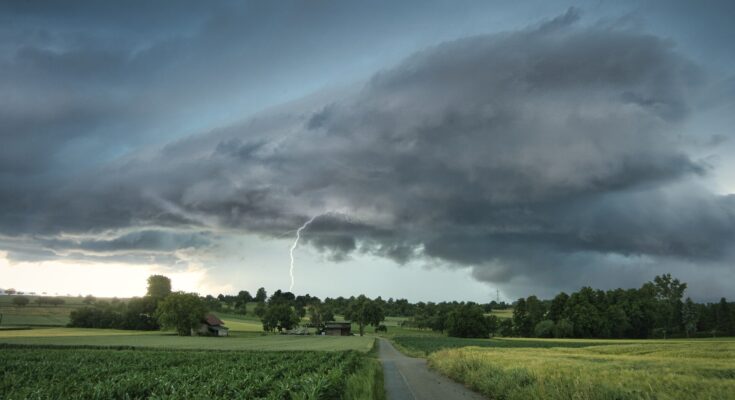
As the weather heats up, many are looking forward to getting outside for some fun in the sun. But for asthma-sufferers, the summer season can present dangerous conditions through asthma triggers that many are unaware of, such as thunderstorms.
“Light rain can actually help improve ambient pollen for those whose asthma is triggered by summer allergens, but certain thunderstorms and weather fronts can concentrate mold and pollen spores and sweep them into the clouds,” said Laurie Manka, MD, a pulmonologist at National Jewish Health. “The humidity and electricity of the storm then rupture the spores, making them smaller particles that are more easily inhaled into the lungs and the sinuses.”
In addition to thunderstorms, mold from the hot, humid weather, grass and pollen allergens and smoke from things like wildfires, cookouts and fireworks can exacerbate asthma symptoms in summer. As climate change lengthens the warm weather season and causes more severe weather, these issues are only expected to worsen over time.
“We can expect worse pollen seasons due to the increased temperature and longer growing seasons, as well as worsening air pollution with higher levels of ozone and more drought cycles leading to wildfires,” Dr. Manka said. “That’s why it’s so important to track how these irritants affect your asthma, avoid exposure and have a solid plan with your doctor to keep asthma controlled on a daily basis, so when you do encounter these triggers, they’re less likely to cause a serious problem that can lead to hospitalization.”
Bernice Roybal of Denver wasn’t diagnosed with asthma until adulthood, and as she learned more about how her lung disease behaved and reacted to environmental factors, she worked with Dr. Manka to get her symptoms under control.
“I didn’t even realize that I tended to have asthma episodes in the summer until Dr. Manka mapped them out and brought it to my attention,” Roybal said. “Now I’m able to take my daily medication and pretreat with an inhaler so I don’t ever get to the point where it’s out of control.”
Because smoke is one of her triggers, she also keeps a close eye on any nearby wildfires, as well as those in western states that may carry smoke long distances.
“Last summer here in Colorado, we didn’t have as many wildfires. But we certainly saw the effects of other wildfires on the west coast that had traveled hundreds of miles and therefore can affect a lot of people,” Dr. Manka said. “Many common summer grass and pollen allergens are also very light and can travel long distances in the wind, so it’s important to know about conditions that can affect your asthma outside of your immediate area as well.”
“There are times that I choose to stay inside if I know there is smoke in the air,” Roybal said. “But because I have good control of my asthma and I take these precautions when needed, I haven’t had to use my rescue inhaler in years, and my asthma really doesn’t prevent me from being able to do the things I love, like hiking and playing with my grandkids.”
Dr. Manka recommends keeping track of summer irritants by checking daily pollen counts and local weather forecasts. For those with persistent symptoms, she often sends patients home with a device that allows them to check their lung function daily so that together they can flag any changes and make necessary adjustments to their treatment plan.
Citation:
Summer thunderstorms can leave asthma-sufferers breathless (2023, May 25)
retrieved 25 May 2023
from https://medicalxpress.com/news/2023-05-summer-thunderstorms-asthma-sufferers-breathless.html
This document is subject to copyright. Apart from any fair dealing for the purpose of private study or research, no
part may be reproduced without the written permission. The content is provided for information purposes only.
Source link




